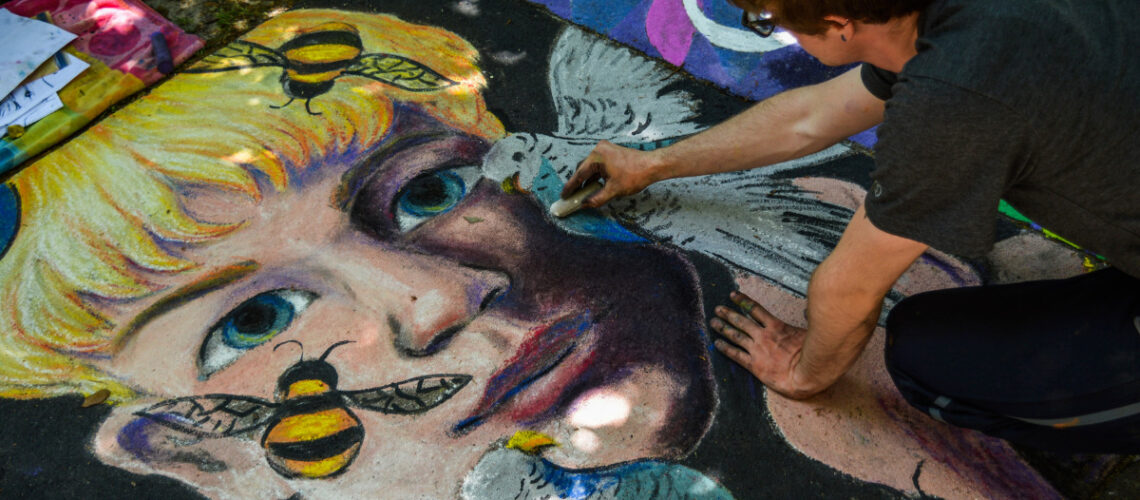Art and culture have long played an integral role in shaping the essence of communities throughout history. From the dawn of civilization to the modern era, the arts have been a source of inspiration, expression, and unity for people around the world. In this blog post, we will delve into the profound significance of art and culture, exploring their impact on community life, identity, and the preservation of heritage.
Art: A Universal Language
Art transcends the barriers of language and geography. It speaks to the soul and connects people in a profound way. Whether it’s a painting, a sculpture, or a piece of music, art has the power to convey emotions and tell stories that words alone cannot capture. It’s a form of expression that resonates with people from all walks of life.
Artists, with their unique perspectives and talents, create pieces that reflect the beauty, pain, and wonder of the human experience. They channel their creativity into works that can stir the deepest of emotions and foster a sense of belonging in a community. Art is, without a doubt, a universal language that binds us all.
Culture: A Tapestry of Traditions
Culture is the fabric upon which the identity of a community is woven. It encompasses the customs, traditions, beliefs, and values that have been passed down through generations. Cultural heritage is a treasure trove of knowledge and artistry, a reflection of a community’s history and its journey through time.
Within culture, one can find the unique flavor of a community, be it in the culinary traditions, the clothing, the rituals, or the storytelling. These traditions are not stagnant; they evolve and adapt to the changing world, yet they remain a vital part of a community’s identity. Through culture, communities maintain a connection with their roots, ensuring that the past informs the present and guides the future.
A Source of Inspiration
Art and culture inspire people to dream, to innovate, and to create. Artists and cultural practitioners are often the visionaries who introduce new ideas and ways of thinking. They challenge the status quo, provoke thought, and encourage discourse. In doing so, they provide a vital service to their communities by fostering critical thinking and pushing the boundaries of what’s possible.
The works of artists can serve as a powerful catalyst for change. A thought-provoking film, a compelling novel, or an evocative piece of music can motivate individuals to take action, whether it’s addressing social issues, advocating for justice, or simply pursuing their own dreams. In this way, art and culture contribute to the vitality of a community by empowering its members to make a positive impact.
Community Identity and Unity
Art and culture are the threads that weave a strong sense of identity and unity within a community. They provide a shared narrative that allows individuals to connect with their neighbors and feel part of something larger than themselves. Festivals, ceremonies, and cultural events bring people together, fostering a sense of belonging and pride.
In multicultural communities, art and culture can serve as bridges between different groups. By celebrating and sharing the diversity of traditions, communities can promote understanding and cooperation among people from various backgrounds. This inclusivity is essential in fostering a harmonious and thriving community where every voice is valued.
The Preservation of Heritage
Preserving cultural heritage is an essential aspect of community life. It ensures that the stories, customs, and traditions of the past are not lost to the sands of time. Artifacts, documents, and works of art serve as tangible links to history, allowing present and future generations to connect with their roots.
Museums, libraries, and archives play a crucial role in this preservation effort. They are repositories of knowledge and culture, safeguarding the treasures of a community for generations to come. Additionally, the act of preserving heritage acknowledges the value of the past, celebrating the achievements and wisdom of those who came before.
Art and Culture: Economic and Social Benefits
Art and culture have tangible economic and social benefits for communities. Beyond their intrinsic value, they contribute to economic growth and prosperity. Cultural events and institutions attract tourism, providing revenue for local businesses and promoting job creation. The arts also have a positive impact on property values, making communities more attractive places to live and invest in.
Moreover, the arts and culture can be powerful tools for education and social development. They encourage creativity and critical thinking in young minds, fostering a love for learning. In addition, they provide therapeutic and healing experiences, improving the well-being of individuals within a community.
In conclusion, art and culture are the lifeblood of vibrant communities. They serve as a universal language, inspire creativity, strengthen identity, preserve heritage, and offer economic and social benefits. It is in the richness of a community’s artistic and cultural expression that its true essence is revealed. These are the aspects that provide a community with depth, character, and an enduring spirit. The arts and culture remind us that our past is worth preserving, our present is worth celebrating, and our future is worth envisioning. In this regard, they remain a testament to the timeless, enduring heartbeat of communities all around the world.

